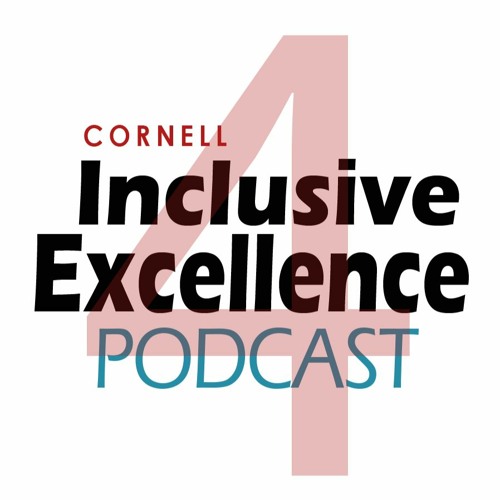
A great way to increase confidence and excitement is to practice subtraction facts. For children, subtracting a number is not an easy task. To be able recognize the differences between two numbers, it takes concrete experience. The best way to help children grasp this concept is through hands on activities.
Bowling is a classic classroom activity that helps kids visualize subtraction. Students can either subtract or count back. Or they can add up numbers to find out how many items are in a pile. To determine how long it takes to complete a task, students can also add units to time.
Students in grades two and three can subtract two digits from three digits, or they can subtract two digits from a group of one digits. Students can also subtract two digits from three digits or subtract two digits from a group of one digits. Subtracting and regrouping involves converting tens to one.

Subtracting a number of tens from a number of hundreds is much easier than subtracting it. Students can practice subtraction of a group containing tens and hundreds by visualizing the numbers as bundles.
A game such as "A la pesca de 10", can be used to help students become familiar with the base ten numbering system. Students will learn that tens consist of groups of tens.
A classic classroom activity is the Subtraction Game. Students are given a variety of subtrahends and are expected to locate the unknown minuend. The player chooses a minuend, and then clicks to subtract the subtrahend from the minuend. A score is awarded to the player for subtracting the minuends, and a score is assigned for subtrahends. The player who is closer to zero wins all four cards. If the player is unable to get close to zero, they are out.
Around the World is another classic classroom activity that uses flashcards to teach students the subtraction equation. The number you play will affect the number cards that you use. The initial deck contains a small number of cards. As the game progresses, however, the card count becomes smaller. The game ends if there aren't any cards left.

Five Little Speckled Frogs allows students to practice their subtraction skills. These games are great for teaching children the concept of jumping by 1. They can act out the game with cardboard characters or finger puppets. You can also have a Positive family review the subtraction fact.
Five Little Monkeys has another great song on subtraction. This game can be enjoyed by the whole family and helps children to learn the concept of jumping. The number of players varies, but the game works well with one or two students.
FAQ
What is homeschooling, exactly?
Homeschooling is a method of education where children learn at home from their parents. It's also known as home education, self-education, and home educating.
If you want your children to learn at home, then homeschooling can be a great option. This method allows them to receive a quality education without leaving the comfort of their own home.
Children are educated by their parents from the time they are born until they reach high school. They decide what subjects and how long they should study. The student learns everything in their own time.
Parents decide when to begin teaching their children. Many schools recommend children attend classes starting at the age of four or five. Some families decide to wait until kindergarten to start teaching their children.
Parents may use any number of resources to guide them through the curriculum. Books, videos, websites, and even magazines provide valuable lessons.
Many families find homeschooling a great fit for their busy schedules. It allows parents to spend more quality time with their children than traditional public schools.
What are the requirements to be a teacher in early childhood education?
The first step is to decide if you are interested in a career as an early childhood educator. First, you need to obtain your bachelor's. Some states require that students have a master's level degree.
You'll likely have to take classes during the summer. These courses include topics like pedagogy (the art and science of teaching) or curriculum development.
Many colleges offer associate degrees which lead to teaching certificates.
Some schools offer certificates, while others offer bachelor's and master's degrees. However, some schools only offer diplomas.
If you plan to teach at home, you may not need any additional training.
How do you get scholarships?
To help pay college expenses, scholarships are grants. There are many kinds of scholarships. These include:
-
Federal Grants
-
State Grants
-
Student Loans
-
Work Study Programs
-
Financial Aid
Federal grants come directly from the U.S. government. Federal grants generally require that applicants meet certain criteria. You must, for example, demonstrate financial need.
Each state offers state grants. State grants can be offered by each state based upon financial need, while others are given for specific purposes.
Banks and other lending institutions issue student loans. Students often borrow money to pay for tuition and living expenses.
Employers can use work-study programmes to attract qualified students. Employers are required by law to pay minimum wage.
Financial aid covers the majority or all of the tuition costs for low-income families.
How can I apply for college?
There are many options for applying to college. You can get started by contacting your high school guidance counselor or admissions representative. Many high school applications can now be submitted online. You can also reach out to local colleges directly. Most colleges accept applications online through their websites.
If you decide to apply through the mail, you'll need to fill out the application, write a personal statement, and send copies of all required documents with your application. This personal statement allows you to describe why you choose to attend this institution and the benefits it could bring to your life. It also helps the admissions committee understand your goals and motivations.
Download sample essays from our website.
Statistics
- Data from the Department of Education reveal that, among 2008 college graduates, 92.8 percent of humanities majors have voted at least once since finishing school. (bostonreview.net)
- In most developed countries, a high proportion of the population (up to 50%) now enters higher education at some time in their lives. (en.wikipedia.org)
- They are more likely to graduate high school (25%) and finish college (116%). (habitatbroward.org)
- Among STEM majors, that number is 83.5 percent. (bostonreview.net)
- “Children of homeowners are 116% more likely to graduate from college than children of renters of the same age, race, and income. (habitatbroward.org)
External Links
How To
Why homeschool?
There are many things to take into consideration when making the decision to homeschool your child or send him to school.
-
What kind of education would you like for your child? Are you looking for academic excellence, or social skills?
-
What level of involvement do you desire to have in your child's education and learning? Do you prefer to stay informed about what your child is doing? Do you prefer to keep informed or let your child make the decisions?
-
Are there special needs that your child has? If so, how will you address those needs?
-
Is it possible to manage your child’s schedule? Do you have the time and commitment to teach your child at home each day?
-
What subjects will your course cover? Math, science, language arts, art, music, history, geography, etc. ?
-
How much money can you afford to educate your child?
-
Is your child old enough to start school?
-
You will need to find somewhere to place your child. This means finding enough space to accommodate a classroom, and providing sufficient facilities such as bathrooms.
-
What is your child’s age?
-
When does your child go down to sleep?
-
When does he/she get up?
-
How long does it take to get from point A to point B?
-
How far away is your child's school?
-
How far is your home from your child's school?
-
How will you get your child from one place to another?
-
What are the benefits of homeschooling?
-
What are the drawbacks?
-
Who will watch your child while he/she's outside?
-
What are your expectations of your child?
-
Which discipline will you choose?
-
What curriculum will you use?
Homeschooling can be done for many reasons. Here are some of the reasons.
-
Your child might have learning disabilities that make it difficult for him/her to attend traditional schools.
-
You wish to offer an alternative education to your child.
-
You desire more flexibility in scheduling.
-
You don't want to pay high tuition fees.
-
Your child receives a better education than what he/she would get in a traditional school setting.
-
You think you can teach your child better than the teacher in a traditional school setting.
-
You don't like how the school system works.
-
You are not comfortable with the school's regulations.
-
Your child should have a strong work ethic.
-
You want your child to have the freedom of choosing which courses they take.
-
You want individual attention for your child.
Homeschooling also offers many other benefits, such as:
-
You don't need to worry about supplies, uniforms, books or pencils.
-
Your child can be educated according to their interests.
-
Parents can homeschool their children and spend time with them.
-
Students who have been homeschooled learn better because they're not distracted by peers.
-
Homeschoolers often score higher than others on standardized tests.
-
Homeschool families tend to be happier overall.
-
Homeschoolers are less likely to drop out.